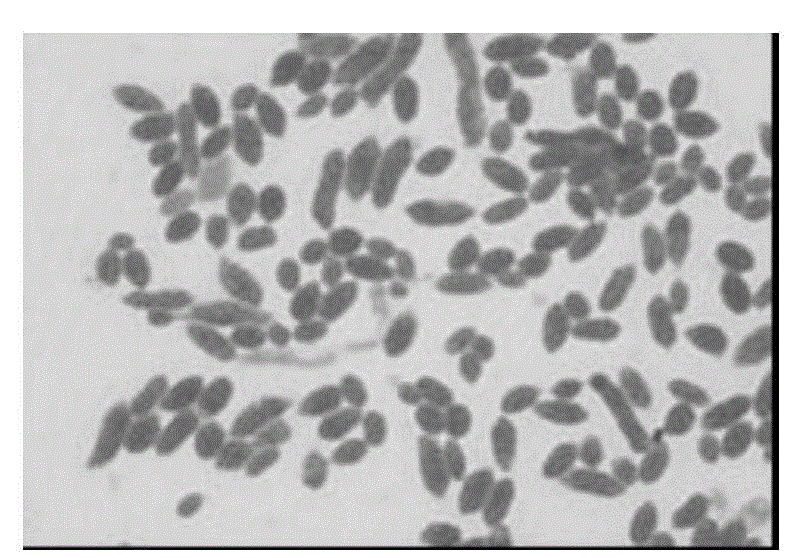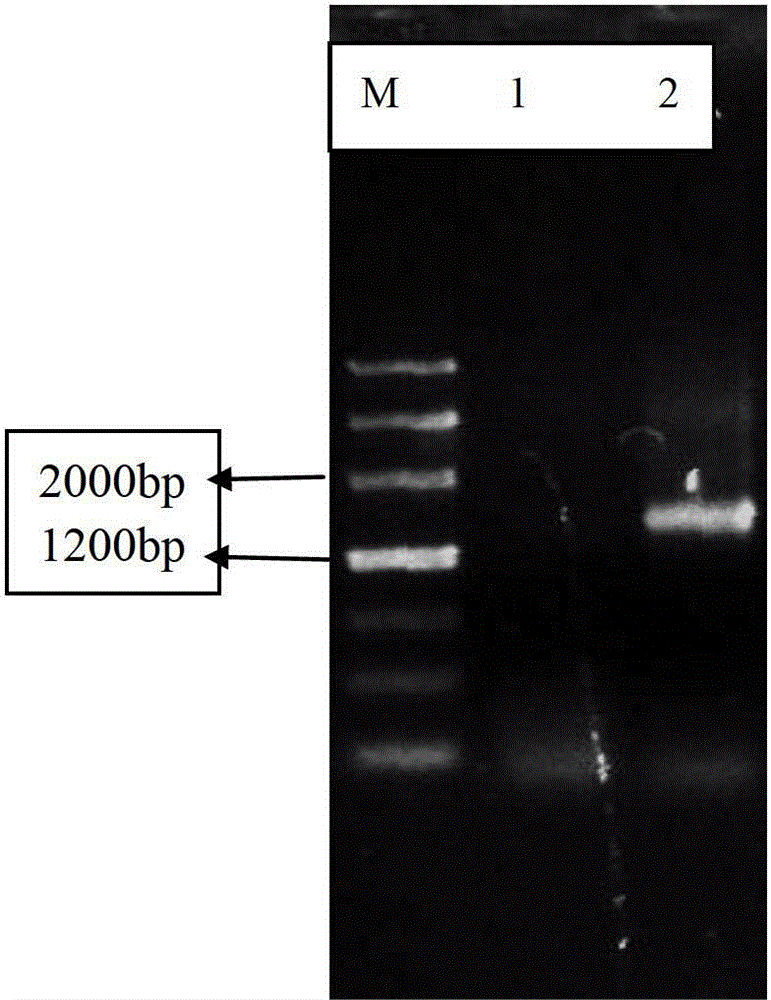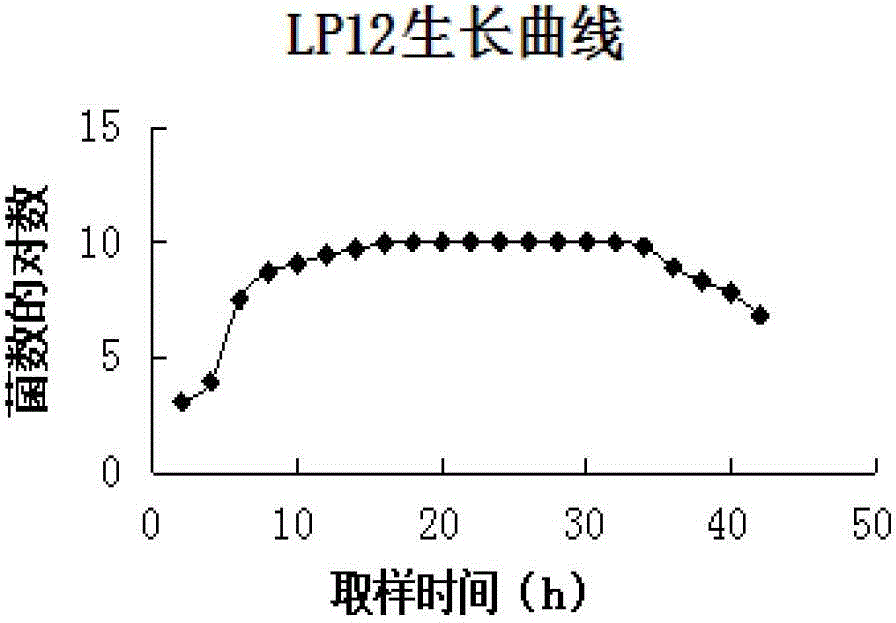Glutaraldehyde degradation strain as well as preparation method and application thereof
A technology of glutaraldehyde and bacterial strains, which is applied in the field of environmental pollution control, can solve problems such as immature technical means, limited resources of glutaraldehyde-degrading bacteria, and impact on soil, and achieve rapid and complete degradation, which is convenient for expanding production and practical application. The effect of avoiding secondary pollution
- Summary
- Abstract
- Description
- Claims
- Application Information
AI Technical Summary
Problems solved by technology
Method used
Image
Examples
Embodiment 1
[0043] Example 1: Screening and identification of glutaraldehyde-degrading bacteria
[0044] 1) Isolation of glutaraldehyde-degrading bacteria:
[0045] 10g of the soil collected from the breeding pig farm of Huazhong Agricultural University was added to a triangular flask filled with 90ml of sterile water. After shaking the flask for 4 days, 100μl of the soil solution was applied to the solution containing 0.05% glutaraldehyde (v / v). Inorganic salt solid medium (KNO 3 1900mg / l, NH 4 NO 3 1650mg / l, KH 2 PO 4 170mg / l, MgSO 4 .7H 2 O 370mg / l, CaCl 2 .2H 2O 440mg / l); 28 ℃ constant temperature culture. The single colony growing on the plate was picked out for streak isolation and purification, and then re-applied to the above-mentioned inorganic salt plate containing glutaraldehyde for cultivation. After 3 times of separation and screening, the strains with stable and efficient degradation ability to glutaraldehyde were preserved and stored on the LB slant for future ...
Embodiment 2
[0065] Embodiment 2: Determination of efficient degrading bacteria to glutaraldehyde degradation ability
[0066] 1) Preparation of glutaraldehyde standard curve:
[0067] Use high performance liquid chromatography to detect the concentration of glutaraldehyde: first use 2,4-dinitrophenylhydrazine (DNPH) to derivatize glutaraldehyde into 2,4-dinitrophenylhydrazone, and then analyze 2,4-dinitrophenylhydrazone The 360nm ultraviolet absorption of nitrophenylhydrazone determines the content of DNPH, and further converts it into the content of glutaraldehyde. HPLC detection method: Chromatographic column: Diamonsil TM C 18 5m, 200mm*4.6mm; mobile phase: acetonitrile / water=70 / 30 (V / V); column temperature: 25°C; flow rate: 1.0mL / min; detection wavelength: 360nm (UV / DAD); injection volume: 20μl (Wang Miaofei, Rapid Analysis of Glutaraldehyde Residue in Chewing Gum by High Performance Liquid Chromatography, Modern Food Science and Technology, 2007, 23(12): 80-82).
[0068] Derivati...
PUM
| Property | Measurement | Unit |
|---|---|---|
| concentration | aaaaa | aaaaa |
| concentration | aaaaa | aaaaa |
Abstract
Description
Claims
Application Information
 Login to View More
Login to View More - R&D
- Intellectual Property
- Life Sciences
- Materials
- Tech Scout
- Unparalleled Data Quality
- Higher Quality Content
- 60% Fewer Hallucinations
Browse by: Latest US Patents, China's latest patents, Technical Efficacy Thesaurus, Application Domain, Technology Topic, Popular Technical Reports.
© 2025 PatSnap. All rights reserved.Legal|Privacy policy|Modern Slavery Act Transparency Statement|Sitemap|About US| Contact US: help@patsnap.com



